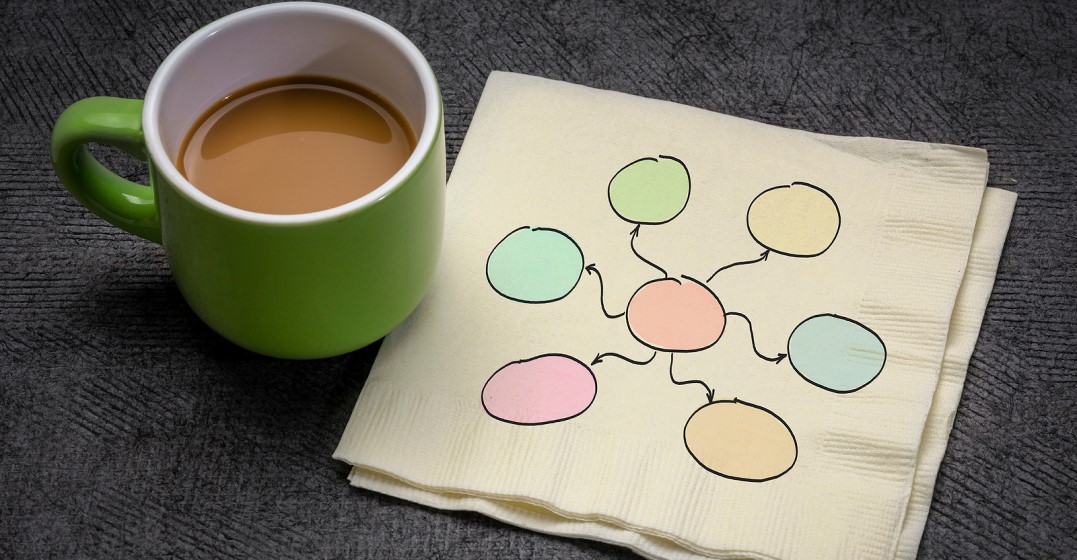Updated on December 13, 2024

Mind map your way to a learning a new language

Well, when we hold everything in our mind, it can become overbearing. Learning a language has many branches with comprehending (and remembering!) vocabulary, grammar, cultural context, sentence structure, the list goes on. Therefore, mind mapping can help organise your path to learning a language and make it fun, rather than daunting.
Mind mapping is a creative tool for us to successfully brainstorm and bring our scattered ideas onto a page in an organised manner. A mind map starts in the centre and branches out, as a map does, with ideas stemming out in different directions to establish topics. So how can mind mapping help language learning?
Firstly, mind mapping is about setting priorities. Ask yourself: What do you want to get from learning a language? Do you have a time frame? How many areas of the language do you want to learn? Establish your goals and then divide them into sections.
Let’s say your priority lies in learning vocabulary, specifically about driving before taking your driving test. (Here’s how to convert your driving license in the UK, by the way!) So you’d put driving in the middle of the mind map, for example, and then filter key areas to work on around it, like road signs, vehicles, traffic lights etc. Then for each one, you can create a themed collection of words with colours and pictures to aid your memory and make the map look pretty!
Either way, mind mapping is an effective way of learning because of the visual aspect of it. Writing vocabulary lists is old school and not so helpful for the brain to remember, whereas mind maps can help you to memorise things.
When learning vocabulary, your memory is either your best friend or worst enemy. Don’t fret – mind mapping can help here! Mindmeister.com says:
“Mind maps improve memory and learning by helping you transition from collecting dots to connecting dots.”
Use symbols, pictures and diagrams to help you learn a quantity of vocabulary in a short quantity of time. As stated above, you can make a mind map for any specific vocabulary and most importantly, succeed in making the learning process cool and creative for your mind to be more alert as you progress with language learning.
Your mind loses focus quite easily when studying; it’s a fact. So mind mapping can help you find focus and concentration when being creative with language learning.
In conclusion
As I say in my blog about mind mapping, there is no set way on how to create a perfect mind map (it doesn’t exist to all those perfectionists out there!). They are visual diagrams created from your heart and mind, so let yourself go. Furthermore, a study shows that mind mapping is an up-to-date tool for students, educators, and researchers.
So what are you waiting for? Get creative and mind map with language learning from the get-go to help establish your goals, memorise vocabulary, concentrate and focus.
You’ve made your mind map, now you’ll need some help from a qualified teacher to help you reach those all important goals. Visit the Lingoda website and sign up for your free 7-day trial with our native speaking teachers today.